When a fire strikes at sea, you need to respond quickly, aggressively, and with a cool head, and you will not give up easily. At some point it is going to be prudent to leave the boat; serious burns will make survival in a raft difficult and gasoline and propane can explode. If the fire is well developed or started with an explosion, there may be time only for a quick Mayday call and to abandon ship.
You should have on board:
- At least two fire extinguishers meeting the U.S. Coast Guard requirements.
- Fire blanket.
- Bucket weighted on one side to sink, with a rope handle.
Fighting a Fire
Every fire is different but the aims are usually the same. The old firefighters acronym RECEO offers guidance: Rescue the victim, Eliminate exposed flammables, Contain the fire, Extinguish the fire, and Overhaul the area to make sure the fire is completely out and wont re-ignite.
- If there has been an explosion, if the fire is well-developed, or if it is near gasoline or propane tanks, abandon ship quickly. Deploy the liferaft or dinghy if time allows, or grab a life vest and jump.
- If you have hands to fight the fire while you man the helm, steer to minimize the effect of wind. If the fire is forward, slow down and head downwind to minimize the wind and keep the flames away from the cockpit.
- Be prepared to shut off the engine, electrical system, and propane if any of these are source of fire, or making situation worse.
- Fight the fire. The first seconds matter. Ideally, you or a crewmember would make a mayday or pan-pan call first, but you don’t want to lose precious seconds when the fire is still able to be contained. The call might have to wait.
- If possible, hold one fire extinguisher in reserve so that after other methods such as water have been tried, the extinguisher is still available to mop up fire in confined spaces, or under the hull liner.
Galley fire
A fire extinguisher should NOT be your first reflex in a galley fire; once the extinguisher is discharged, you will be forced out of the cabin by toxic fumes and will not be able to finish fighting the fire, mop up embers, or confirm that it is out. If the fire is in a pan, put a lid on it. Do not use water on grease fires. To fight a fire in the oven, close the door. For fire in cabinets and liner, cover with fire blanket. Use water as applicable. Use a fire extinguisher for confined spaces.
Engine room fire
Do not open the engine room door. The fire will feed on oxygen. A fire port should be available. Discharge one entire extinguisher into the space so that all air is displaced. Consider opening the cover to investigate, but position yourself behind the door in case it flares up. It may be best to wait a few minutes, or it may be better to immediately cool hot surfaces with copious water. Do not use water if there is a significant fuel leak.
Cabin Fire
If fire cannot be put out, close all hatches and portholes, but leave escape hatches loose.
Fire extinguisher
- Practice on dry land a least once. Spray the base of the flames so that oxygen is cut off at the source; aim high and the fire will simply lift the agent. Remove the extinguisher from its bracket, pull the pin out of the extinguisher, and hold the unit upright. Stand about six feet back from the flames. You will be pushed back.
- Work the edges. Reduce the fire area and then smother. You only have 20-30 seconds before the extinguisher is spent. Get other crew to bring remaining fire extinguishers (but give explicit instruction to NOT use it yet), water buckets, and the fire blanket.
If all fails, abandon ship
Do not risk serious burns. Have a crewmember position the raft or dinghy in the water where it will be safe from the flames and wont get pinned to your boat. Do not wait until the very last minute. You need time for an orderly evacuation and a mayday call.
After the flames are out
Fire extinguishers do NOT cool the embers and the fire may re-ignite. A fire is not out until it is cold. Water and wet towels are effective for cooling. A fire watch should be maintained for several hours. If you have not done so already, transmit a pan-pan call to the Coast Guard. It is always good to keep them informed so that they can respond more quickly.







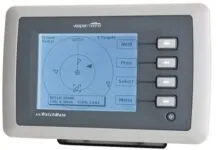
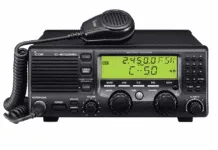

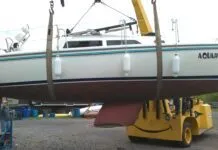
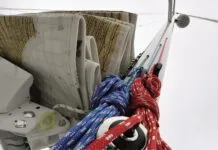
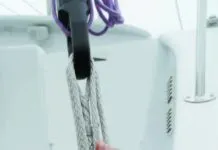
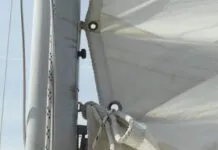
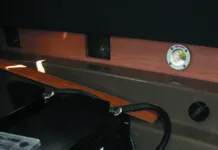
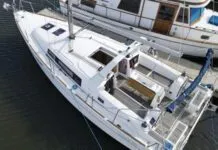
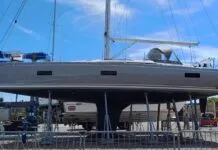




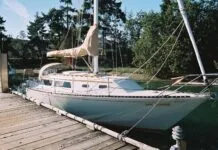



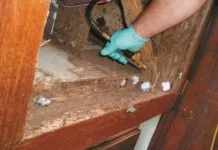
















Great article – wondering if you could recommend any further reading on this subject? I am currently having a 20m trawler built, and there is some discussion now regarding this topic, and the associated systems (shut downs, ventilation, extinguishers, etc.)
You may want to point out that Lithium Ion batteries will have a tendency to burst into flames when being charged. I’m in the aviation business and we are forbidden to use these batteries on aircraft because of this tendency. I’m not saying not to outfit a sailboat with these batteries just that it is vital that the owner know that basic fire extinguishers will not put out a Lithium Ion battery fire, they require special chemicals to do so, so the Owner must carry on board those special extinguishers, in addition to the regular ones. These battery fires are also very, very hot and spread quickly. Unfortunately the Lithium Ion battery salesmen wont tell you this before you purchase these very expensive (but long lasting) batteries.
As a 44 year veteran of the fire service, as well as the skipper of 42 ft sailboat and an ASA instructor, I recommend that you carry C02 extinguishers on your boat. They are effective against electrical fires, fuel fires, and cooking fires (the three most commonly found fires on boats), they provide cooling which dry chemical extinguishers do not, they don’t emit toxic fumes (yes, CO2 can displace oxygen in a confined space, but we exhale it with every breath), and they don’t cause corrosion of all your electrical and electronic equipment. Nearly all fixed systems in marine engine rooms are CO2. The only downside is that they are very expensive.